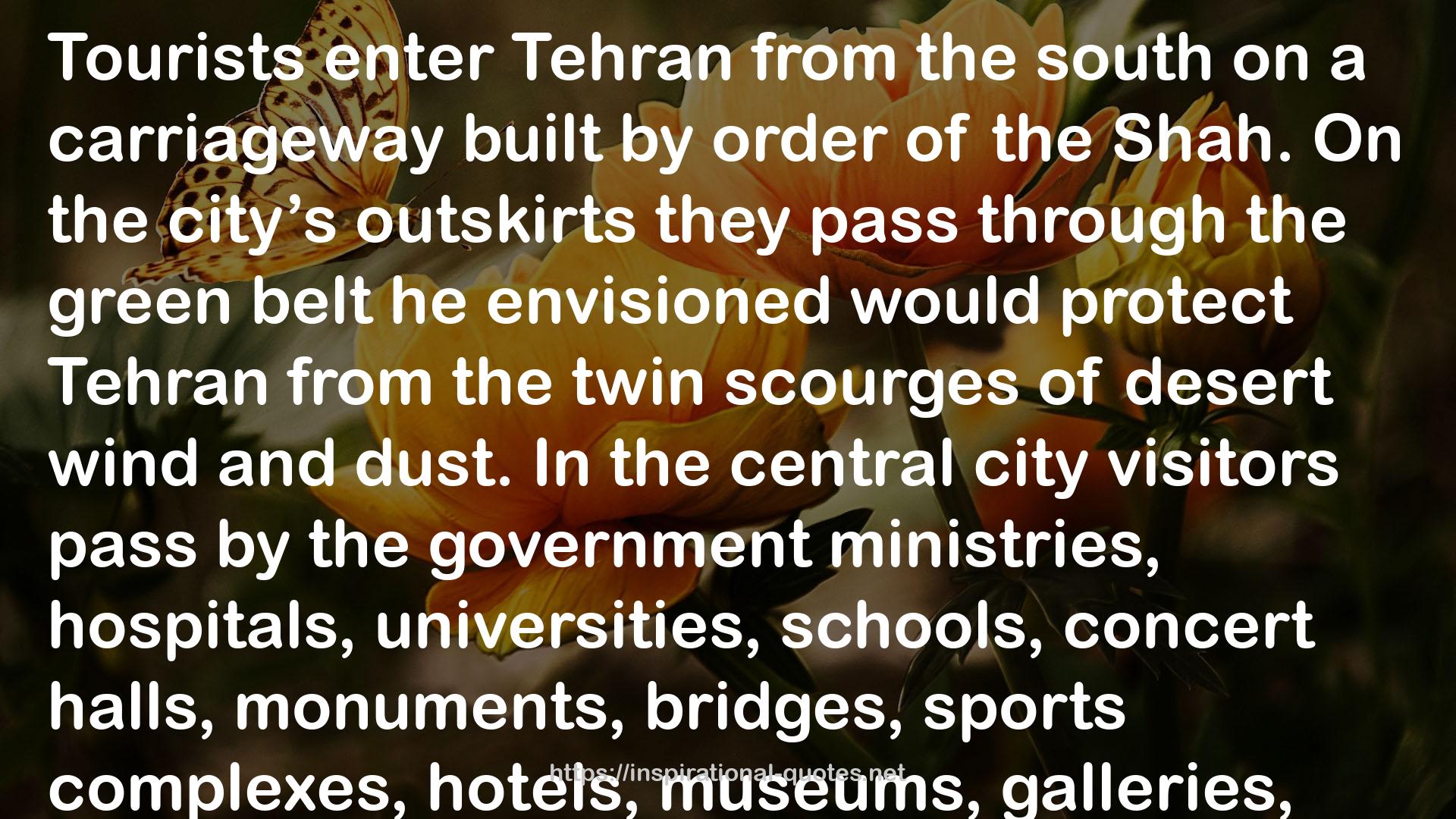" Tourists enter Tehran from the south on a carriageway built by order of the Shah. On the city’s outskirts they pass through the green belt he envisioned would protect Tehran from the twin scourges of desert wind and dust. In the central city visitors pass by the government ministries, hospitals, universities, schools, concert halls, monuments, bridges, sports complexes, hotels, museums, galleries, and gleaming underground metro that were among his many pet projects. … He championed the social welfare state that today provides Iranians with access to state-run health care and education. He raised the scholarship money that allowed hundreds of thousands of Iranian university students, including many luminaries of the Islamic Republic, to study abroad at leading American and European universities. The Shah ordered the fighter jets that made Iran’s air force the most powerful in southwestern Asia. He established the first national parks and state forests and ordered strict water, animal, and conservation measures. Perhaps it is no surprise that Iran today has the look and feel of a haunted house. The man who built modern Iran is nowhere to be seen but his presence is felt everywhere. The revolutionaries who replaced the Shah may not like to hear it, but Iran today is as much his country as it is theirs. "
― Andrew Scott Cooper , The Fall of Heaven: The Pahlavis and the Final Days of Imperial Iran
